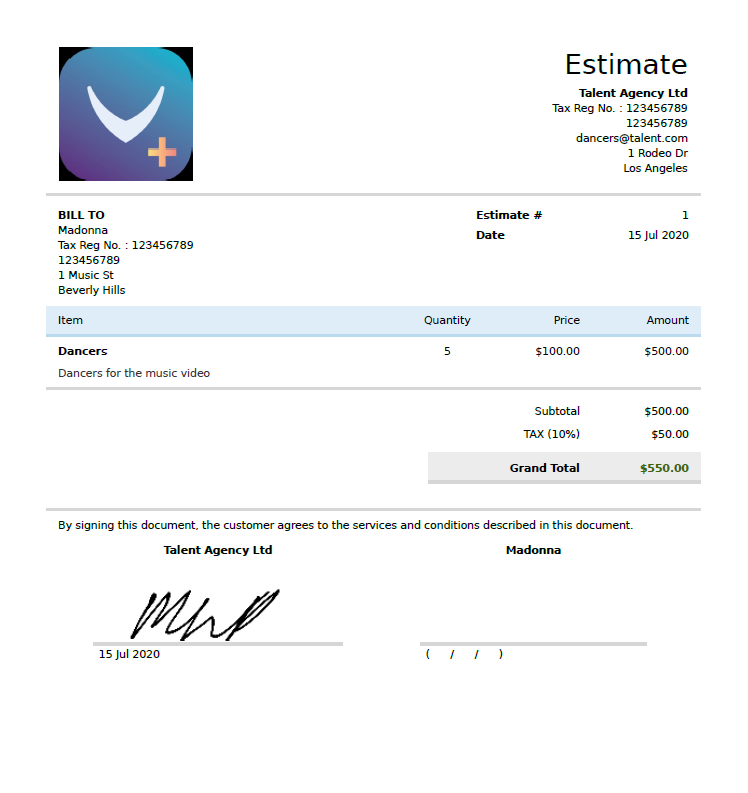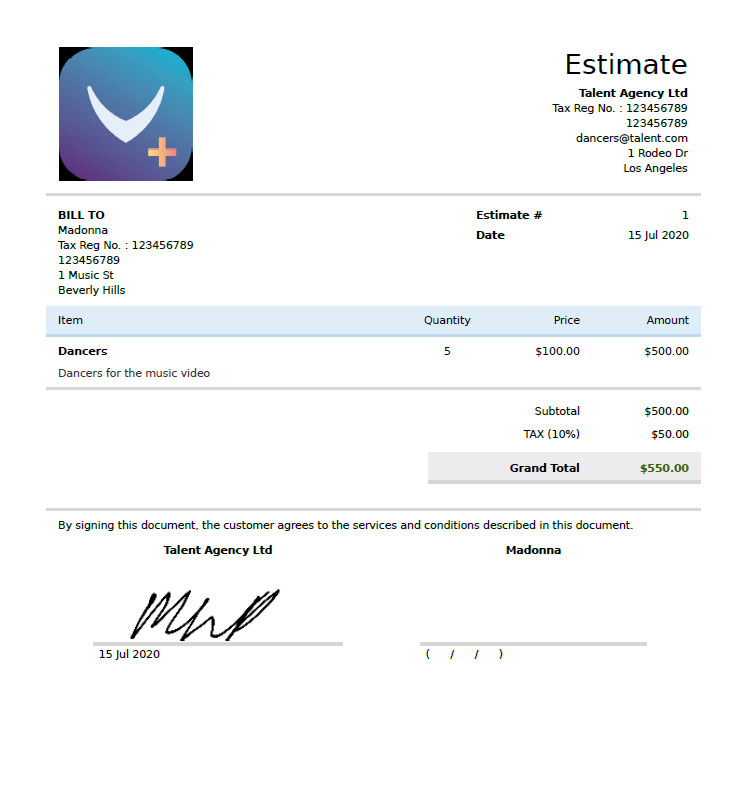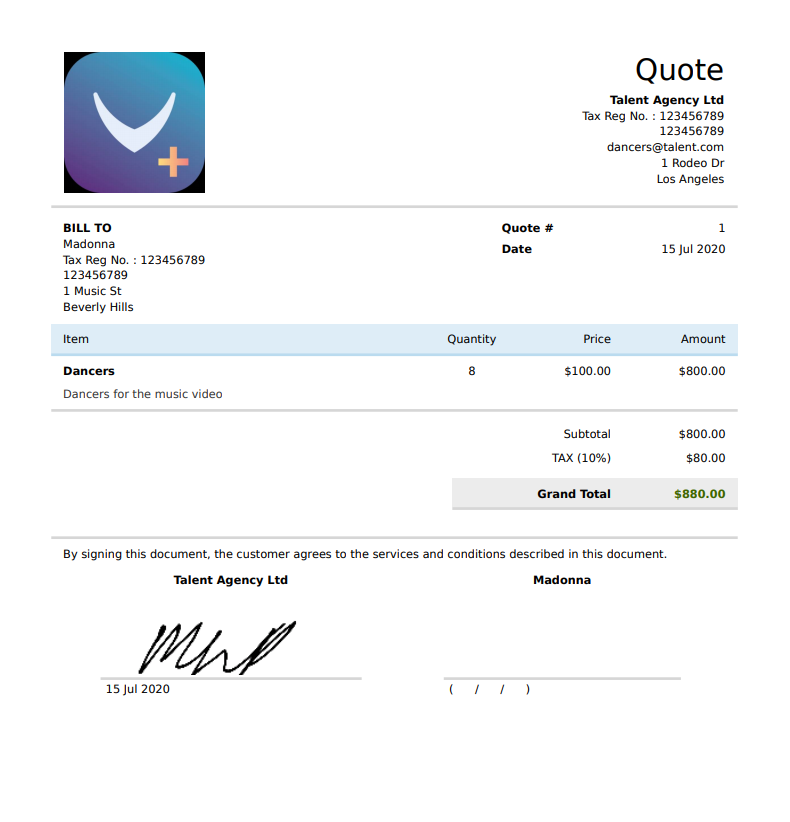
Do I legally have to quote a plumbing job in California?
What documents do I need to provide to clients for plumbing jobs in California?
✓ No credit card needed ✓ All features are available with our Free plan
✓ No credit card needed
✓ All features are available with our Free plan
An estimate is a rough guess of what a project will cost given to a prospective client.
Estimates don’t normally have exact details of a project. However, a business estimate will generally include a breakdown of the products and/or services, their costs and an estimated timeline with finish dates.
Clients use estimates to compare companies and assess whether your services/products are within their budget.
Essentially, they help you win jobs.
That’s why it’s important for business owners to understand what an estimate is. If you need to make an estimate for your business, download one of our free estimate templates or try using Bookipi for free to make professional estimates online. Learn how to make an estimate with our detailed business tutorial.
A job estimate is a document that outlines the products and/or services with their respective costs being provided as a part of a larger project.
Estimates are used by clients to get an overview of the costs and timeframe of a service being provided by a company. With estimates, clients can budget better or compare companies that offer similar services.
Estimates generally include the following:
Prior to drafting an estimate, there will be an initial conversation between the client and seller about the project requirements, expectations, and when these will need to be provided by.
Estimates are not fixed and can be adjusted as a project changes. Additional services may be added or removed as seen fit. Costs can also change if there are any issues or the price of materials has changed since the first estimate.
There are benefits of estimates for both the seller and the client. With an estimate, clients are able to factor the project into their budget. For the seller, they are able to plan the resources they dedicate to the project and schedule other projects accordingly.
Estimates are also useful to confirm a mutual understanding between the client and seller about what each party wants and are required to provide.
It should be noted, that an estimate is not a legally binding document. Estimates aren’t invoices or receipts, and don’t confirm payment.

The big difference between estimates and invoices lies in timing. An invoice is a bill for services or products. An estimate is sent only before a seller is hired. In contrast, an invoice is usually sent during or after a project.
An estimate is more of a general outline of the costs and services and is provided before a project. See below for an example of an estimate generated by Bookipi software.

You might also notice the language is different on an estimate and invoice. An invoice can also be a legally binding document if it is part of a signed contract.
Unlike a quote, an estimate is not a fixed price. An estimate gives an approximate cost for the goods and services provided.
Generally, the fixed price in a quote will be available for a limited time. Depending on your services and industry, this can vary. However, this time frame is usually around 30 to 90 days. A quote’s fixed price and conditions can’t be changed once accepted by the client. An exception is to change the amount of work required if extra work is required.
Quotes are also legally binding if it is part of a signed contract whereas an estimate is not. As a result, you should never label an estimate as a quote or vice versa.
The main benefit of sending an estimate over a quote is that it’s flexible. You don’t have to guarantee what is written on an estimate. Alternatively, with a quote, you are required to meet what has been outlined. However, you are able to set the price of a product that normally fluctuates and the client must pay the price you set. Generate a professional quote using our combined quote, estimate and invoice generator.

Explore related articles:

What documents do I need to provide to clients for plumbing jobs in California?

An estimate is a rough outline of how much it would cost and how long

A job quote is a document that provides a fixed price for a job or
Create your free account now
Know somebody who needs the easiest invoice app?
Share Bookipi with your network instantly.
| Cookie | Duration | Description |
|---|---|---|
| cookielawinfo-checkbox-analytics | 11 months | This cookie is set by GDPR Cookie Consent plugin. The cookie is used to store the user consent for the cookies in the category "Analytics". |
| cookielawinfo-checkbox-functional | 11 months | The cookie is set by GDPR cookie consent to record the user consent for the cookies in the category "Functional". |
| cookielawinfo-checkbox-necessary | 11 months | This cookie is set by GDPR Cookie Consent plugin. The cookies is used to store the user consent for the cookies in the category "Necessary". |
| cookielawinfo-checkbox-others | 11 months | This cookie is set by GDPR Cookie Consent plugin. The cookie is used to store the user consent for the cookies in the category "Other. |
| cookielawinfo-checkbox-performance | 11 months | This cookie is set by GDPR Cookie Consent plugin. The cookie is used to store the user consent for the cookies in the category "Performance". |
| viewed_cookie_policy | 11 months | The cookie is set by the GDPR Cookie Consent plugin and is used to store whether or not user has consented to the use of cookies. It does not store any personal data. |